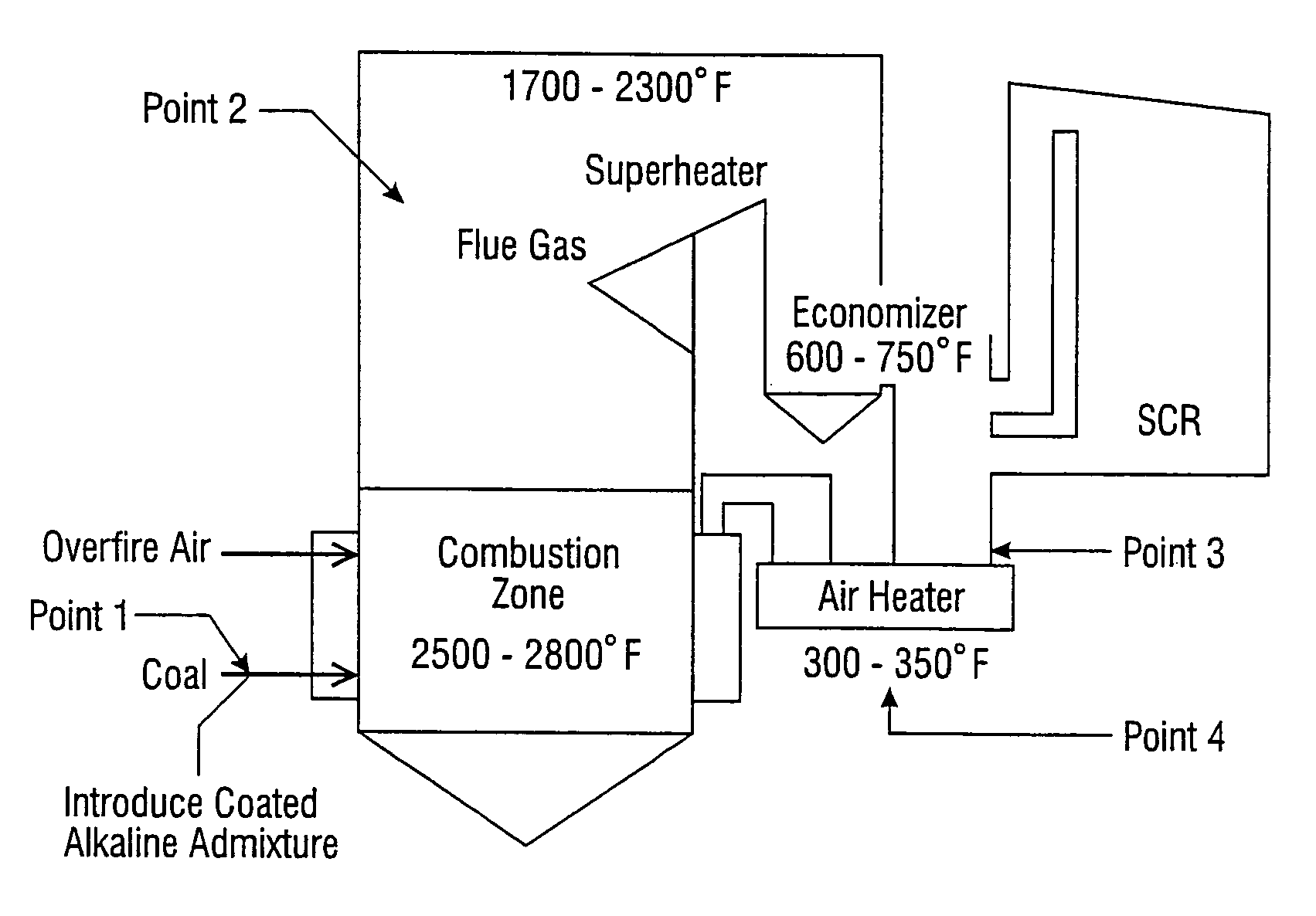Method for reducing the amount of a pollutant in a flue gas resulting from the combustion of a fossil fuel
a technology of fossil fuel and flue gas, which is applied in the direction of emission prevention, separation processes, lighting and heating apparatus, etc., can solve the problems of increasing the amount of sulfur dioxide oxidized by the catalyst, creating anxiety in the community, and reducing so as to and reduce the amount of pollutant
- Summary
- Abstract
- Description
- Claims
- Application Information
AI Technical Summary
Benefits of technology
Problems solved by technology
Method used
Image
Examples
Embodiment Construction
Definitions
[0034]“reducing the amount of a pollutant” refers to actually decreasing the absolute amount of a particular pollutant which exits the stack.
[0035]“pollutant” means an environmental contaminate including but not limited to arsenic, sulfur trioxide, and mercury. It can be any combination of arsenic, sulfur trioxide and mercury and or other pollutants. It can include a single contaminate or multiple contaminates.
[0036]“flue gas”—the resultant gaseous mixture resulting from the combustion of fossil fuel within the boiler.
[0037]“combustion of fossil fuel”—the burning of said fuel which chemically is the reaction of the fuel with oxygen.
[0038]“boiler”—the vessel in which heat is introduced resulting from the combustion of fuel and steam is produced from water by such heat. The water / steam is contained in tubes or pipes within the boiler. The resultant steam is then often used to turn a turbine / generator which produces electricity although in some cases steam is the final produ...
PUM
 Login to View More
Login to View More Abstract
Description
Claims
Application Information
 Login to View More
Login to View More - R&D
- Intellectual Property
- Life Sciences
- Materials
- Tech Scout
- Unparalleled Data Quality
- Higher Quality Content
- 60% Fewer Hallucinations
Browse by: Latest US Patents, China's latest patents, Technical Efficacy Thesaurus, Application Domain, Technology Topic, Popular Technical Reports.
© 2025 PatSnap. All rights reserved.Legal|Privacy policy|Modern Slavery Act Transparency Statement|Sitemap|About US| Contact US: help@patsnap.com


